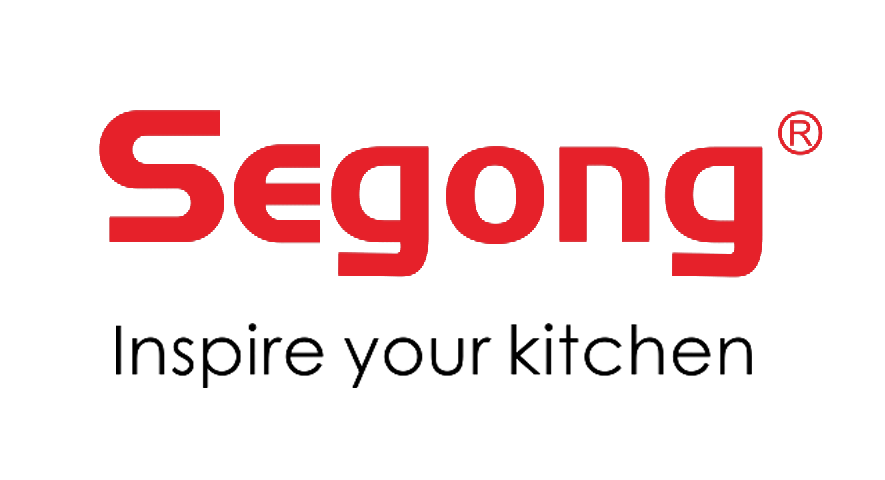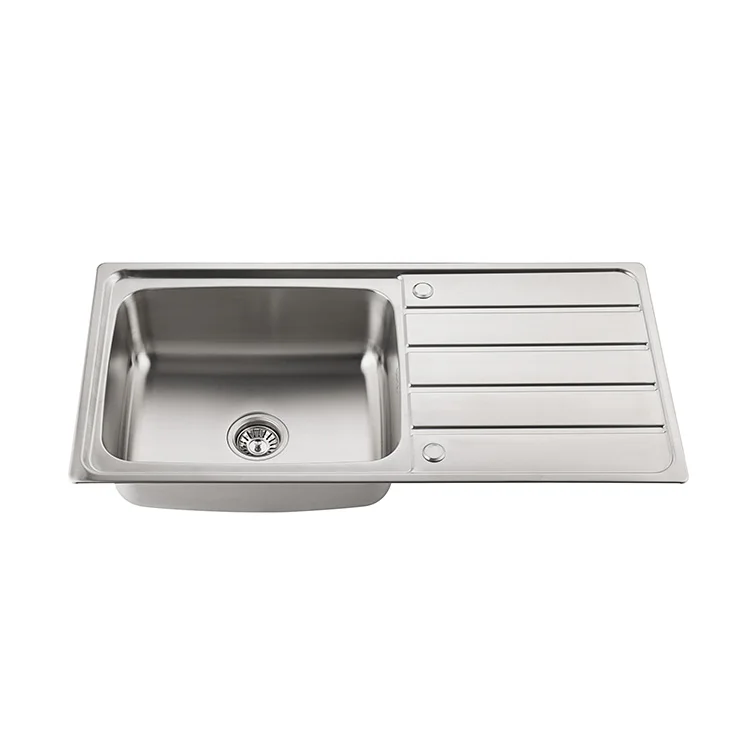Understanding Press Sinks in Industrial Applications
Defining Press Sinks and Their Core Functions
Press sinks represent a type of hydraulic system designed to work with materials at high pressures, and they play a really important part in creating parts for many different sectors. Basically, these machines help shape, form, and even cut through various materials which makes manufacturing faster and more accurate overall. When manufacturers incorporate press sinks into their assembly lines, the end result tends to be better quality products that maintain consistent standards since every piece meets those tight tolerances required. Looking at how these systems actually function reveals why they're so valuable for boosting what factories can produce. From automotive parts to household appliances, press sink technology has become absolutely essential for keeping up with today's demands in industrial manufacturing environments around the world.
Common Industries Utilizing Press Sink Technology
Press sink technology has become a mainstay across several key industries including automotive manufacturing, aerospace components, and electronic device production where large scale output is required. These machines handle everything from sheet metal forming operations to complex plastic injection molding jobs that keep factory lines running smoothly day after day. Recent market reports show growing numbers of companies adopting this equipment as manufacturers push harder to produce thousands of identical parts while still maintaining strict quality controls throughout each production run. With competition heating up in global markets, many plant managers now see press sinks as vital tools for streamlining workflows and cutting down on waste during high volume manufacturing cycles.
Breaking Down the Cost Components
Initial Investment and Installation Expenses
When looking at press sinks, the upfront cost includes not just what they cost to buy but also installation fees that fluctuate based on how complicated the hydraulic setup needs to be. A good quality press sink tends to boost production rates enough that it might actually pay for itself eventually. Many companies checking their budgets will contact top manufacturers for pricing info so they can figure out if spending money now makes sense financially down the road. This kind of thinking helps management compare what they spend versus how much extra output they get while making sure everything fits within their overall financial strategy without stretching too thin.
Operational and Maintenance Costs Over Time
Running press sinks comes with several ongoing costs including electricity bills, staff time needed for operation, plus all those little repairs and replacements over time. These things really add up in the end. Companies that stick to a good maintenance routine tend to avoid those surprise breakdowns that cost so much money to fix later on. When businesses actually track these expenses as part of their budgeting process, they get a much better handle on what owning and operating press sinks really costs them month after month. Knowing about these money matters helps factory managers plan ahead for future spending and figure out ways to keep operations running smoothly without breaking the bank.
Quantifying the Benefits of Press Sink Implementation
Productivity Gains and Efficiency Improvements
In manufacturing settings, press sinks make a real difference when it comes to getting things done faster and better. When companies install these systems, they often see their production lines moving much quicker. Some factories report around 30% boost in output after switching to press sink technology, which shows just how much of an impact they can have on day-to-day operations. With smoother workflows comes less waiting time between production stages, and workers don't spend so long standing around waiting for parts to arrive. This means factory managers can allocate staff where they're needed most instead of having people idle. For manufacturers looking to keep up with customer orders without breaking the bank, investing in press sink solutions makes good business sense in today's fast paced industrial landscape.
Quality Control Advantages in Manufacturing
Adding press sinks to manufacturing lines brings real improvements to quality control across the board. The systems help keep processing much more consistent, cutting down on defects and waste while boosting product quality overall. With automated setups that monitor things in real time, factory managers can tweak operations as needed to maintain those high standards during production runs. Looking at the numbers from several plants, there's been around a 30% drop in rework rates after implementing these systems, which means big savings on materials and happier customers getting what they paid for. Beyond just better products, companies see their reputations grow stronger in the marketplace because they deliver reliable quality time after time.
Long-Term vs Short-Term Financial Considerations
Immediate Cost Savings Through Process Optimization
When manufacturers install press sinks into their production lines, they typically see money saved right away through better management of both labor hours and raw materials. These automated systems cut down on the need for so many workers doing repetitive tasks, which naturally brings down payroll expenses. Press sink technology makes everything run smoother too, so most companies get their money back faster than expected because they're producing more goods while spending less time and effort. Looking at the numbers tells us why these quick cash savings matter so much for keeping any factory running smoothly during tough market conditions.
Extended Lifespan and Reduced Replacement Needs
Press sinks tend to last much longer than older models, so they don't need replacing as often. This means businesses save money over time instead of constantly buying new ones. The longer life span actually cuts down on overall spending, something that fits right into modern sustainability goals. When looking at the bottom line, companies that track these kinds of savings find themselves with more room in their budgets. A restaurant chain we worked with recently saved thousands after switching to these durable options. They redirected those funds toward kitchen upgrades rather than just sinking money into replacement costs every few years. Over time, this approach builds real financial stability while still maintaining quality standards across operations.
Environmental Impact and Sustainability Factors
Energy Efficiency Improvements With Modern Press Sinks
Modern press sink technology is really changing how much energy gets used in manufacturing these days. Companies are finding that newer systems come packed with all sorts of energy saving features that cut down on electricity needs when compared to the old models sitting around since the 90s. Some factories report cutting their energy bills nearly in half after switching over to these efficient presses. And let's face it, saving money at the bottom line while also shrinking those carbon footprints makes good business sense. Most manufacturers we talk to see this as a win-win situation where they meet their green targets without sacrificing productivity or profitability.
Waste Reduction and Environmental Compliance Benefits
Modern press sinks really help cut down on waste because they make manufacturing much more precise, which means far less material gets thrown away. When materials get used properly instead of wasted, companies save money while staying green at the same time. With new tech coming out all the time, manufacturers find it easier to meet those tough environmental rules that keep getting stricter every year. Companies that adopt these greener methods tend to look better in front of regulators and customers alike. Looking at actual results from factories that switched to modern press systems shows real improvements in both cost savings and cleaner operations over time.
Case Study: ROI Analysis for Press Sink Adoption
Real-World Cost Projections and Savings Timeline
Looking at actual case studies makes it clear why so many manufacturers switch to press sinks for their operations. Most companies see their money back within just one to two years after installation. Take food processing plants for instance, some report cutting maintenance costs by over 30% once they installed these systems. The numbers tell a story too when we look at what gets spent upfront versus what gets saved down the road. Beyond just saving dollars though, there's something else going on here. When factories adopt this kind of tech, they're actually positioning themselves better against competitors who still rely on older methods. It's becoming pretty standard across the board now as shops realize both the wallet benefits and long term operational improvements.
Lessons From Successful Manufacturing Implementations
Looking at where press sinks have worked well in factories gives manufacturers some real takeaways they can apply. When companies study these success stories, they often find ways to sidestep mistakes others made and get better returns on what they spend. Take Ford's plant in Michigan for instance they implemented press sink technology last year and saw productivity jump by 15%. What makes these implementations stick? Most successful ones share something in common: management commits early on and works closely with engineers during setup. The numbers back this up too. According to recent reports from the Manufacturing Association, plants using press sinks report saving between $20k-$50k monthly just on energy costs alone. While not every business will see identical results, most find that these systems pay for themselves within 18 months when properly maintained.
Overcoming Challenges in Press Sink Investments
Addressing Common Financial Concerns
Thinking about investing in press sinks usually brings up money worries first. Most companies worry about what they'll spend upfront, how long their operations might stop during installation, and whether the whole process will be too complicated to handle. Small and mid-sized businesses face this challenge even more since cash is tight for them. But there are ways to tackle these problems head on. Doing some serious number crunching along with realistic budget planning helps calm those financial anxieties. When companies actually sit down and map out all the expenses while also spotting where they might save money later, things start looking better in the long run. And let's not forget about financing alternatives either. Many press sink makers offer lease deals or special payment plans that help bridge the gap between wanting something now and being able to afford it right away. These options make getting new equipment less of a financial burden than it seems at first glance.
Strategic Approaches to Maximize ROI
Getting the most bang for buck from press sink investments requires some serious thinking ahead that matches what the company wants to achieve over time. Setting actual targets and measuring progress helps make sure these investments actually work towards where the business is headed. Training employees regularly makes all the difference too. Staff who know how to properly use the equipment tend to get better results while also reducing those frustrating breakdowns that waste time. Looking at tech upgrades like automated systems or data tracking tools isn't just nice to have either. These additions really boost output and ultimately improve profits. Companies that take this whole picture approach when rolling out new equipment typically see much better money making outcomes down the road than those who rush in without proper planning.
Table of Contents
- Understanding Press Sinks in Industrial Applications
- Breaking Down the Cost Components
- Quantifying the Benefits of Press Sink Implementation
- Long-Term vs Short-Term Financial Considerations
- Environmental Impact and Sustainability Factors
- Case Study: ROI Analysis for Press Sink Adoption
- Overcoming Challenges in Press Sink Investments



